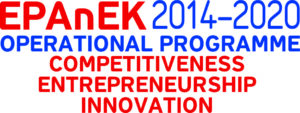AlgaFeed4Fish
Title: Καλλιέργεια μικροφυκών σε μεγάλη κλίμακα και χρήση της παραγόμενης βιομάζας ως εναλλακτική πρώτη ύλη ιχθυοτροφής
Funding Source: EPAnEK Aquaculture
Budget IMBBC: 70,075€
Start / End Date: 2018 - 2021
Web site URL: https://www.hcmr.gr/el/news/algafeed4fish/
Project Progress: 100%
Research Directions:
Fish nutrition and feeding
Bioanalysis and biotechnology
Description:






The AlgaFeed4Fish project aims to efficiently cultivate the microalgae Nannochloropsis, Isochrysis and Hematococcus at laboratory-scale and subsequently apply this expertise in pilot-scale facilities hosted by the aquaculture company PLAGTON S.A. located on the coast of western Greece. The produced algal biomass will be treated with various methods including enzymatic hydrolysis, ultra sonication, and chemical hydrolysis in acidic or alkaline media. Algal cell walls must be disrupted in order to increase the bioavailability of the pigments and nutrients contained within them. The algal biomass will then be dried and incorporated into fish food used to feed farmed seabass, partially substituting the main ingredient of fishmeal.
This innovative research could make a major impact on a section of the Greek economy as, until now, microalgae are only used to produce zooplankton and only in the few fish farming facilities that possess incubators for algal production. In this project, after undergoing the cell disruption processes mentioned above, the biomass will be utilized as a raw material to produce a fish feed suitable for use in all stages of the fish farming process. Indicators of yield of the cell disruption process may include a) percentage of extracellular proteins, b) percentage of non-disrupted cells, and c) cell wall cellulose content. The percentages of processed algal biomass incorporated into the fish feed will be 2%, 4%, 8% and 15%, and aim to substitute respective proportions of fishmeal. This biomass will be a source of several nutrients (proteins, lipids and carbohydrates), as well as bioactive substances and growth factors (polyunsaturated fatty acids, vitamins, mineral salts, etc.), and is predicted to enhance the growth and health of the farmed fish. Polyunsaturated fatty acids (PUFAs) related to the organoleptic properties of fish are especially important. These are stored as triglycerides and play a significant role in healthy fish growth. Hence, when the meat of cultured fish is rich in PUFAs it has high nutritious value for humans.
The worldwide demand for fish meat is high and increasing constantly, and the contribution of aquaculture to cover demands is already notable and predicted to increase in the near future. Despite its good development prospects, however, fish farming in Greece and the Mediterranean in general, faces serious obstacles related to the high costs of the raw materials used to produce fish food (mainly fishmeal and fish oil).
Fishmeal is the main source of protein in commercial fish foods, but its availability is constantly declining due to overfishing and its price is constantly increasing, therefore threatening the sustainability of the entire aquaculture sector. For this reason, research on alternative protein sources (from either animals or plants) capable of substituting the fishmeal in commercial fish food, has been prioritized. In this sense, the utilization of algae in fish food is of great interest, since it could not only lessen the dependence of fish farming facilities on fishmeal and fish oil, but also increase the nutritional value of the fish meat produced.